NHS This was Nevada Series Articles
[one_half]
NHS This was Nevada Series
This was Nevada series was created by NHS staff beginning in 1975. The series was very popular and was carried in several local newspapers in the state. The subject matter related to Nevada subjects ranging from people, places and things. Early authors to the series began with NHS Director, John Townley, History Curator Phil Earl, Manuscripts Curator Guy Rocha and an occasional guest writer or two wrote the articles. By late 1981, Phil Earl took over the series completely until his retirement in 1999.
Article Inventory List – coming soon
People
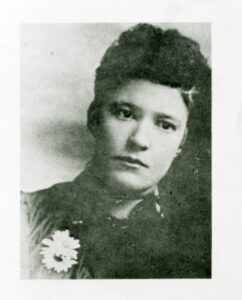
Clara Dunham Crowell
Clara Dunham Crowell – Nevada’s First Woman Sheriff
Although the involvement of women in law enforcement is becoming increasingly common today, this was not the case a half-century ago when Clara Dunham Crowell became Sheriff of Lander County, the first woman in the state to hold such a position. The daughter of a pioneer Austin family, she was educated in the local schools and worked as a waitress before marrying George D. Crowell, a rancher who later ran a stage-line before being elected Sheriff.
Clara Dunham Crowell_Nevada’s First Woman Sheriff
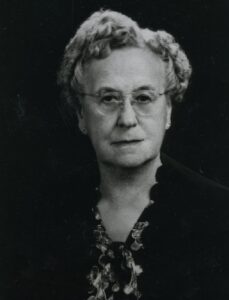
Edna Catlin Baker
First Woman Elected in Nevada: The Election of 1916
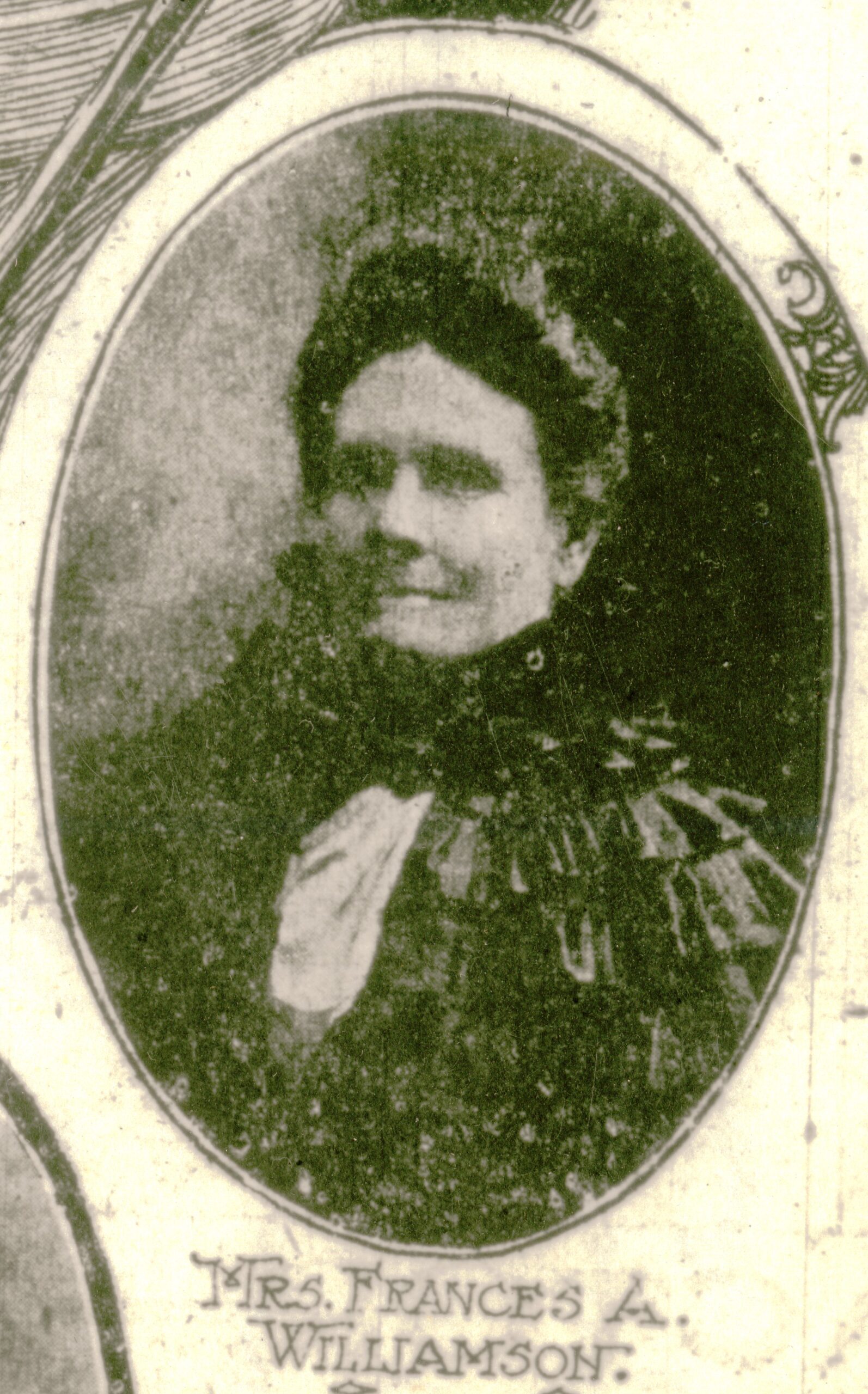
Frances A. Williamson
Frances A. Williamson: Pioneering Nevada Suffragist
Places
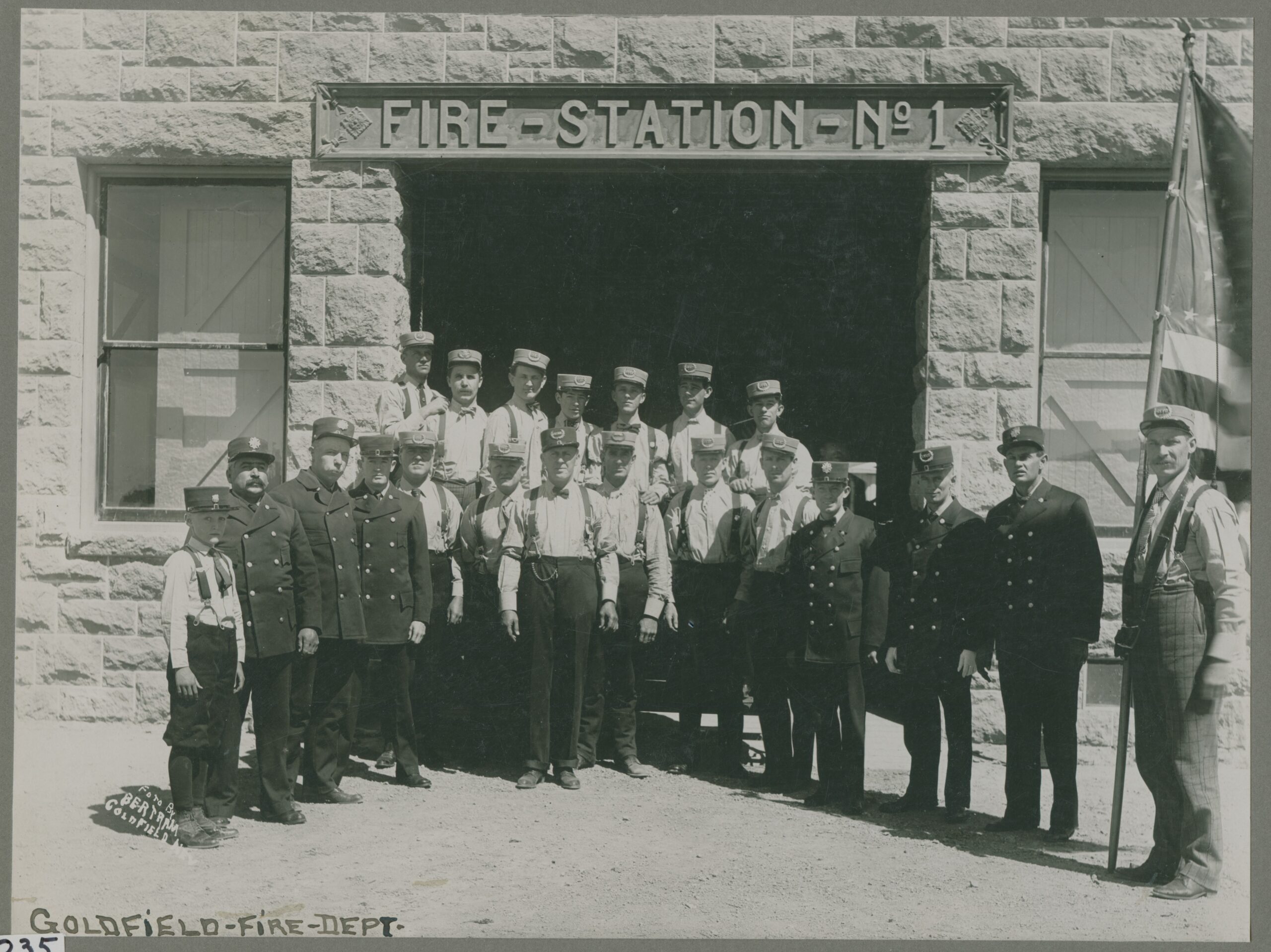
Goldfield Fire Department, 1908.
The Beer that Saved Goldfield
In terms of fire protection, the early history of Nevada’s 20th century mining camps is not unlike that of Reno and the Comstock Lode. The initial water supply developed in the camps minimally served the needs of residents and businesses and took care of the mines and mills, but fire protection had a low priority.
The Beer that saved Goldfield #534
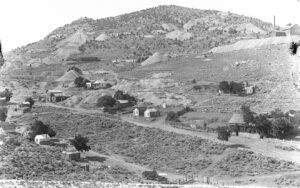
Panoramic View of Pioche with mines in background.
Great Fire of Pioche, 1871
Although Pioche had a reputation as one of Nevada’s toughest towns during the boom days of the early 1870s, the community shared many of the problems of other settlements on the mining frontier. Among these was an inadequate water system and a consequent problem with fire.
Great Pioche Fire of 1871 #890
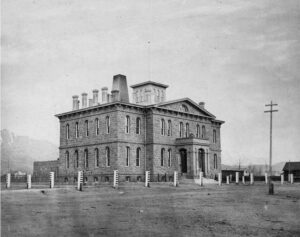
View of the Carson City Mint, 1875.
Carson City’s Big Quake, 1887
At 2:45 in the morning, June 3, 1887, a rolling, thundering earthquake spread across western Nevada. Although probably centered somewhere south of Carson City, it was felt in Genoa, Washoe Valley, Steamboat Springs, and on north, but it caused the most damage at the capital and stirred the most people from their beds.
[/one_half][one_half]
Mining
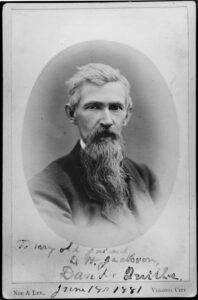
Dan DeQuille – The Stones of Paharanagat
Dan DeQuille – The Traveling Stones of Pahranagat
Explorers
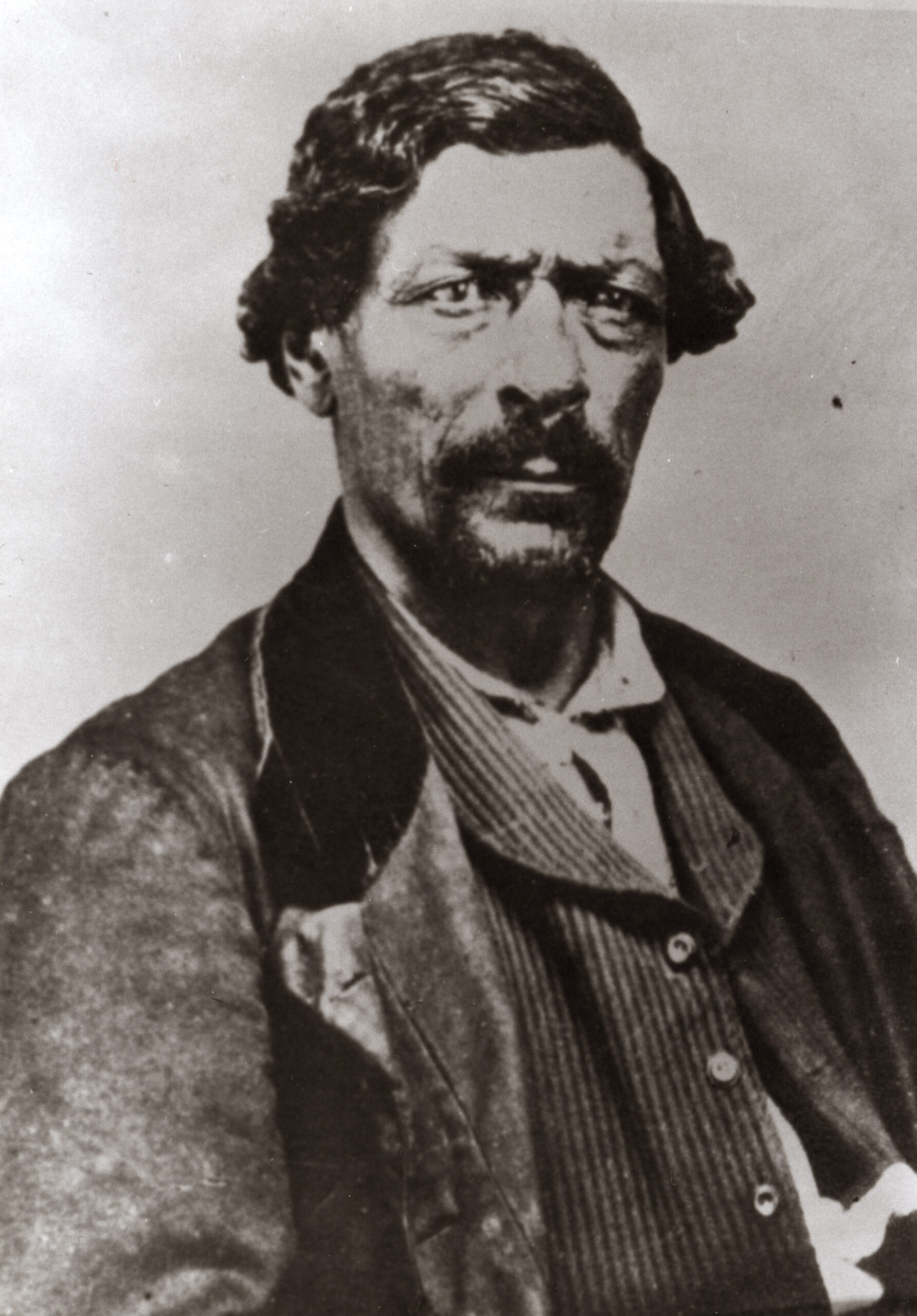
James P. Beckwourth
James P. Beckwourth: Black Pioneer
Holidays

A Merry Christmas postcard.
Christmas in Candelaria
In the mining camp of Candelaria, now erased from the face of the earth by a modern mining operation, the Christmas holidays were eagerly anticipated in 1880. The town was a mere four years of age at that time but was prosperous and booming with some 250 men employed in the mines. Christmas in Candelaria
Organizations
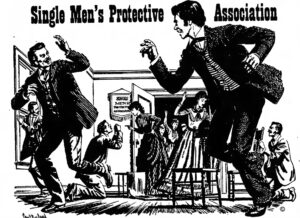
Single Men’s Protective Association illustration, Harold’s Club.
Single Men’s Protective Association
Proper, marriageable women were usually in short supply in the early days of most Nevada mining camps, but this imbalance in the sexes was usually rectified to some extent if a camp made the transition to a settled community.
Single Men’s Protective Association #567
Animals
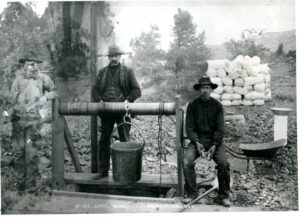
Stray Dog Mine, Manhattan, NV.
The Saga of Stray Dog Bob
Among the many memorable dogs which have played a part in Nevada’s history is Stray Dog Bob, once a resident of the mining camp of Manhattan. When Bob showed up on Manhattan’s streets in the summer of 1905, he created no more excitement than any other cur which happened through town.
The Saga of Stray Dog Bob #564
[/one_half]
